The Impact of the Neighborhood Built Environment on the Walking Activity of Older Adults: A Multi-Scale Spatial Heterogeneity Analysis
Abstract
1. Introduction
2. Literature Review
2.1. Neighborhood Built Environment and Walking Activities
2.2. Spatial Scale and Main Advantage
3. Data and Methodology
3.1. Data Sources
3.2. Model Method
3.2.1. MGWR Model
3.2.2. Model Weight
3.2.3. Model Estimation
3.2.4. Model Evaluation
4. Results
4.1. Variable Inspection
4.2. Model Comparison
4.3. Spatial Feature
- Location
- Residential density
- Land use mixture
- Number of pedestrian crossings
- Number of bus stops
- Number of retail establishments
- Number of restaurants
- Number of recreation facilities
5. Conclusions
Supplementary Materials
Author Contributions
Funding
Institutional Review Board Statement
Informed Consent Statement
Data Availability Statement
Acknowledgments
Conflicts of Interest
References
- World Health Organization. Caring for the Health of the Elderly in China; World Health Organization: Geneva, Switzerland, 2021.
- Barnett, D.W.; Barnett, A.; Nathan, A.; Van Cauwenberg, J.; Cerin, E. Built environmental correlates of older adults’ total physical activity and walking: A systematic review and meta-analysis. Int. J. Behav. Nutr. Phys. Act. 2017, 14, 103. [Google Scholar] [CrossRef] [PubMed]
- Cerin, E.; Nathan, A.; Van Cauwenberg, J.; Barnett, D.W.; Barnett, A. The neighbourhood physical environment and active travel in older adults: A systematic review and meta-analysis. Int. J. Behav. Nutr. Phys. Act. 2017, 14, 15. [Google Scholar] [CrossRef] [PubMed]
- Amaya, V.; Chardon, M.; Klein, H.; Moulaert, T.; Vuillerme, N. What do we know about the use of the walk-along method to identify the perceived neighborhood environment correlates of walking activity in healthy older adults: Methodological considerations related to data collection—A systematic review. Sustainability 2022, 14, 11792. [Google Scholar] [CrossRef]
- Feuillet, T.; Commenges, H.; Menai, M.; Salze, P.; Perchoux, C.; Reuillon, R.; Kesse-Guyot, E.; Enaux, C.; Nazare, J.A.; Hercberg, S.; et al. A massive geographically weighted regression model of walking-environment relationships. J. Transp. Geogr. 2018, 68, 118–129. [Google Scholar] [CrossRef]
- Cheng, L.; Shi, K.; De Vos, J.; Cao, M.; Witlox, F. Examining the spatially heterogeneous effects of the built environment on walking among older adults. Transp. Policy 2021, 100, 21–30. [Google Scholar] [CrossRef]
- Yun, H.Y. Neighborhood built environments, walking, and self-rated health among low-income older adults in St. Paul, Minnesota. Sustainability 2021, 13, 3501. [Google Scholar] [CrossRef]
- Herbolsheimer, F.; Mahmood, A.; Ungar, N.; Michael, Y.L.; Oswald, F.; Chaudhury, H. Perceptions of the neighborhood built environment for walking behavior in older adults living in close proximity. J. Appl. Gerontol. 2021, 40, 1697–1705. [Google Scholar] [CrossRef]
- Kemperman, A.; Timmermans, H. Influences of built environment on walking and cycling by latent segments of aging population. Transport. Res. Rec. 2009, 2134, 1–9. [Google Scholar] [CrossRef]
- Gong, Y.; Gallacher, J.; Palmer, S.; Fone, D. Neighbourhood green space, physical function and participation in physical activities among elderly men: The Caerphilly Prospective study. Int. J. Behav. Nutr. Phys. Act. 2014, 11, 40. [Google Scholar] [CrossRef]
- Gómez, L.F.; Parra, D.C.; Buchner, D.; Brownson, R.C.; Sarmiento, O.L.; Pinzón, J.D.; Moreno, J.; Lobelo, F. Built environment attributes and walking patterns among the elderly population in Bogotá. Am. J. Prev. Med. 2010, 38, 592–599. [Google Scholar] [CrossRef]
- Cheng, L.; De Vos, J.; Shi, K.; Yang, M.; Chen, X.; Witlox, F. Do residential location effects on travel behavior differ between the elderly and younger adults? Transp. Res. D Transp. Environ. 2019, 73, 367–380. [Google Scholar] [CrossRef]
- Zhang, Y.; Li, C.; Ding, C.; Zhao, C.; Huang, J. The built environment and the frequency of cycling trips by urban elderly: Insights from Zhongshan, China. J. Asian Archit. Build. 2016, 15, 511–518. [Google Scholar] [CrossRef]
- Paydar, M.; Fard, A.K.; Khaghani, M.M. Walking toward metro stations: The contribution of distance, attitudes, and perceived built environment. Sustainability 2020, 12, 10291. [Google Scholar] [CrossRef]
- Cerin, E.; Sit, C.H.P.; Barnett, A.; Johnston, J.M.; Cheung, M.C.; Chan, W.M. Ageing in an ultra-dense metropolis: Perceived neighbourhood characteristics and utilitarian walking in Hong Kong elders. Public Health Nutr. 2012, 17, 225–232. [Google Scholar] [CrossRef] [PubMed]
- Feuillet, T.; Salze, P.; Charreire, H.; Menai, M.; Enaux, C.; Perchoux, C.; Hess, F.; Kesse-Guyot, E.; Hercberg, S.; Simon, C.; et al. Built environment in local relation with walking: Why here and not there? J. Transp. Health 2016, 3, 500–512. [Google Scholar] [CrossRef]
- Böcker, L.; Van Amen, P.; Helbich, M. Elderly travel frequencies and transport mode choices in Greater Rotterdam, the Netherlands. Transportation 2016, 44, 831–852. [Google Scholar] [CrossRef]
- Lee, E.; Dean, J. Perceptions of walkability and determinants of walking behaviour among urban seniors in Toronto, Canada. J. Transp. Health 2018, 9, 309–320. [Google Scholar] [CrossRef]
- Ding, C.; Lin, Y.; Liu, C. Exploring the influence of built environment on tour-based commuter mode choice: A cross-classified multilevel modeling approach. Transp. Res. D Transp. Environ. 2014, 32, 230–238. [Google Scholar] [CrossRef]
- Ma, X.; Zhang, J.; Ding, C.; Wang, Y. A geographically and temporally weighted regression model to explore the spatiotemporal influence of built environment on transit ridership. Comput. Environ. Urban 2018, 70, 113–124. [Google Scholar] [CrossRef]
- Cheng, L.; Wang, K.; De Vos, J.; Huang, J.; Witlox, F. Exploring non-linear built environment effects on the integration of free-floating bike-share and urban rail transport: A quantile regression approach. Transp. Res. Part A Policy Pract. 2022, 162, 175–187. [Google Scholar] [CrossRef]
- Hanibuchi, T.; Kawachi, I.; Nakaya, T.; Hirai, H.; Kondo, K. Neighborhood built environment and physical activity of Japanese older adults: Results from the Aichi Gerontological Evaluation Study (AGES). BMC Public Health 2011, 11, 657. [Google Scholar] [CrossRef] [PubMed]
- Xiao, L.; Yang, L.; Liu, J.; Yang, H. Built environment correlates of the propensity of walking and cycling. Sustainability 2020, 12, 8752. [Google Scholar] [CrossRef]
- Ewing, R.; Cervero, R. Travel and the built environment: A meta-analysis. J. Am. Plan. Assoc. 2010, 76, 265–294. [Google Scholar] [CrossRef]
- Smith, G.; Gidlow, C.; Davey, R.; Foster, C. What is my walking neighbourhood? A pilot study of English adults’ definitions of their local walking neighbourhoods. Int. J. Behav. Nutr. Phys. Act. 2010, 7, 34. [Google Scholar] [CrossRef] [PubMed]
- Ding, C.; Cao, X.; Wang, Y. Synergistic effects of the built environment and commuting programs on commute mode choice. Transp. Res. A Policy Pract. 2018, 118, 104–118. [Google Scholar] [CrossRef]
- Yang, H.; Zhai, G.; Yang, L.; Xie, K. How does the suspension of ride-sourcing affect the transportation system and environment? Transp. Res. D Transp. Environ. 2022, 102, 103131. [Google Scholar] [CrossRef]
- Nagel, C.L.; Carlson, N.E.; Bosworth, M.; Michael, Y.L. The relation between neighborhood built environment and walking activity among older adults. Am. J. Epidemiol. 2008, 168, 461–468. [Google Scholar] [CrossRef]
- Zhang, Y.; Li, Y.; Liu, Q.; Li, C. The built environment and walking activity of the elderly: An empirical analysis in the Zhongshan metropolitan area, China. Sustainability 2014, 6, 1076–1092. [Google Scholar] [CrossRef]
- Feng, J. The influence of built environment on travel behavior of the elderly in urban China. Transp. Res. D Transp. Environ. 2016, 52, 619–633. [Google Scholar] [CrossRef]
- Yang, H.; Huo, J.; Pan, R.; Xie, K.; Zhang, W.; Luo, X. Exploring built environment factors that influence the market share of ridesourcing service. Appl. Geogr. 2022, 142, 102699. [Google Scholar] [CrossRef]
- Hou, Y. Polycentric urban form and non-work travel in Singapore: A focus on seniors. Transp. Res. D Transp. Environ. 2019, 73, 245–275. [Google Scholar] [CrossRef]
- Li, Z.; Fotheringham, A.S.; Oshan, T.M.; Wolf, L.J. Measuring bandwidth uncertainty in multiscale geographically weighted regression using Akaike weights. Ann. Amer. Assoc. Geogr. 2020, 110, 1500–1520. [Google Scholar] [CrossRef]
- Cheng, L.; Chen, X.; Yang, S.; Cao, Z.; De Vos, J.; Witlox, F. Active travel for active ageing in China: The role of built environment. J. Transp. Geogr. 2019, 76, 142–152. [Google Scholar] [CrossRef]
- Cheng, L.; De Vos, J.; Zhao, P.; Yang, M.; Witlox, F. Examining non-linear built environment effects on elderly’s walking: A random forest approach. Transp. Res. D Transp. Environ. 2020, 88, 102552. [Google Scholar] [CrossRef]
- Engels, B.; Liu, G.J. Social exclusion, location and transport disadvantage amongst non-driving seniors in a Melbourne municipality, Australia. J. Transp. Geogr. 2011, 19, 984–996. [Google Scholar] [CrossRef]
- Yang, S.; Fan, Y.; Deng, W.; Cheng, L. Do built environment effects on travel behavior differ between household members? A case study of Nanjing, China. Transp. Policy 2017, 81, 360–370. [Google Scholar] [CrossRef]
- Hou, Y.; Moogoor, A.; Dieterich, A.; Song, S.; Yuen, B. Exploring built environment correlates of older adults’ walking travel from lifelogging images. Transp. Res. D Transp. Environ. 2021, 96, 102850. [Google Scholar] [CrossRef]
- Bao, J.; Shi, X.; Zhang, H. Spatial analysis of bikeshare ridership with smart card and POI data using geographically weighted regression method. IEEE Access 2018, 6, 76049–76059. [Google Scholar] [CrossRef]
- Fotheringham, A.S.; Yang, W.; Kang, W. Multiscale geographically weighted regression (MGWR). Ann. Am. Assoc. Geogr. 2017, 107, 1247–1265. [Google Scholar] [CrossRef]
- Oshan, T.M.; Li, Z.; Kang, W.; Wolf, L.J.; Fotheringham, A.S. MGWR: A python implementation of multiscale geographically weighted regression for investigating process spatial heterogeneity and scale. ISPRS Int. J. Geo-Inf. 2019, 8, 269. [Google Scholar] [CrossRef]
- Yu, H.; Fotheringham, A.S.; Li, Z.; Oshan, T.; Kang, W.; Wolf, L.J. Inference in multiscale geographically weighted regression. Geogr. Anal. 2020, 52, 87–106. [Google Scholar] [CrossRef]
- Geng, S.; Ma, M.; Hu, X.; Yu, H. Multi-scale geographically weighted regression modeling of urban and rural construction land fragmentation—A case study of the Yangtze River Delta Region. IEEE Access 2021, 10, 7639–7652. [Google Scholar] [CrossRef]
- Corseuil-Giehl, M.W.; Hallal, P.C.; Brownson, R.C.; d’Orsi, E. Exploring associations between perceived measures of the environment and walking among Brazilian older adults. J. Aging Health 2017, 29, 45–67. [Google Scholar] [CrossRef] [PubMed]
- Corseuil, M.W.; Schneider, I.J.C.; Silva, D.A.S.; Costa, F.F.; Silva, K.S.; Borges, L.J.; d’Orsi, E. Perception of environmental obstacles to commuting physical activity in Brazilian elderly. Prev. Med. 2011, 53, 289–292. [Google Scholar] [CrossRef]
- Gaglione, F.; Cottrill, C.; Gargiulo, C. Urban services, pedestrian networks and behaviors to measure elderly accessibility. Transp. Res. D Transp. Environ. 2021, 90, 102687. [Google Scholar] [CrossRef]
- Wu, H.; Wang, H.; Liu, D.; Cao, Y.; Qu, Y. The impact of the neighborhood built environment on the commuting patterns and health of patients with chronic diseases: A case study of Changshu, China. Sustainability 2022, 14, 11201. [Google Scholar] [CrossRef]
- Hwang, E.; Brossoie, N.; Jeong, J.W.; Song, K. The impacts of the neighborhood built environment on social capital for middle-aged and elderly Koreans. Sustainability 2021, 13, 756. [Google Scholar] [CrossRef]
- Gao, C.; Yu, J.; Zhao, X.; Wang, H.; Liu, Z.; Gu, Y. The effect of built environment on older people leisure-time walking and physical activity in different sex groups in the city of Ningbo, China. Sustainability 2022, 14, 6562. [Google Scholar] [CrossRef]
- Liu, P.; Wu, C.; Chen, M.; Ye, X.; Peng, Y.; Li, S. A spatiotemporal analysis of the effects of urbanization’s socio-economic factors on landscape patterns considering operational scales. Sustainability 2020, 12, 2543. [Google Scholar] [CrossRef]
- Yang, C.; Zhan, Q.; Lv, Y.; Liu, H. Downscaling land surface temperature using multiscale geographically weighted regression over heterogeneous landscapes in Wuhan, China. IEEE J. Sel. Topics Appl. Earth Observ. Remote Sens. 2019, 12, 5213–5222. [Google Scholar] [CrossRef]
- Taiyuan Bureau of Statistics. Main data bulletin of Taiyuan’s sampling survey on population change in 2021; Taiyuan Bureau of Statistics: Taiyuan, China, 2022. [Google Scholar]
- Fotheringham, A.S.; Brunsdon, C.; Charlton, M. Geographically Weighted Regression: The Analysis of Spatially Varying Relationships; John Wiley & Sons: Hoboken, NJ, USA, 2002. [Google Scholar]
- Hastie, T.; Tibshirani, R. Generalized additive models. Stat. Sci. 1986, 1, 297–318. [Google Scholar] [CrossRef]
- Li, Z.; Shang, Y.; Zhao, G.; Yang, M. Exploring the multiscale relationship between the built environment and the metro-oriented dockless bike-sharing usage. Int. J. Environ. Res. Public Health 2022, 19, 2323. [Google Scholar] [CrossRef] [PubMed]
- Chaudhury, H.; Mahmood, A.; Michael, Y.L.; Campo, M.; Hay, K. The influence of neighborhood residential density, physical and social environments on older adults’ physical activity: An exploratory study in two metropolitan areas. J. Aging Stud. 2012, 26, 35–43. [Google Scholar] [CrossRef]
- Herrmann-Lunecke, M.G.; Mora, R.; Vejares, P. Perception of the built environment and walking in pericentral neighbourhoods in Santiago, Chile. Travel Behav. Soc. 2021, 23, 192–206. [Google Scholar] [CrossRef]
- Craney, T.A.; Surles, J.G. Model-dependent variance inflation factor cutoff values. Qual. Eng. 2002, 14, 391–403. [Google Scholar] [CrossRef]
- Li, S.; Zhao, P.; Zhang, H.; Quan, J. Walking behavior in the old downtown Beijing: The impact of perceptions and attitudes and social variations. Transp. Policy 2019, 73, 1–11. [Google Scholar] [CrossRef]
- Handy, S.; Cao, X.; Mokhtarian, P.L. Self-selection in the relationship between the built environment and walking: Empirical evidence from Northern California. J. Am. Plann. Assoc. 2006, 72, 55–74. [Google Scholar] [CrossRef]
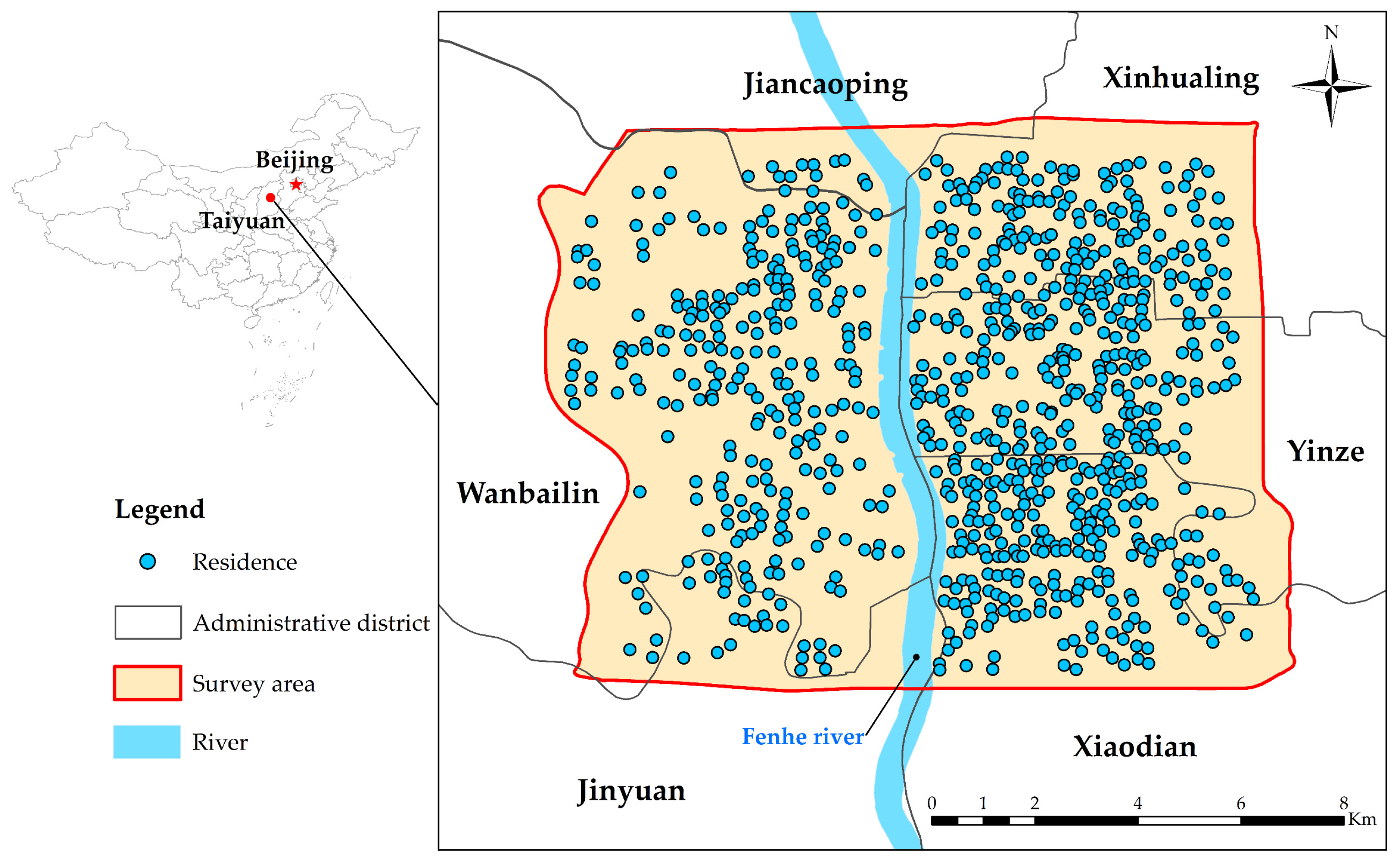
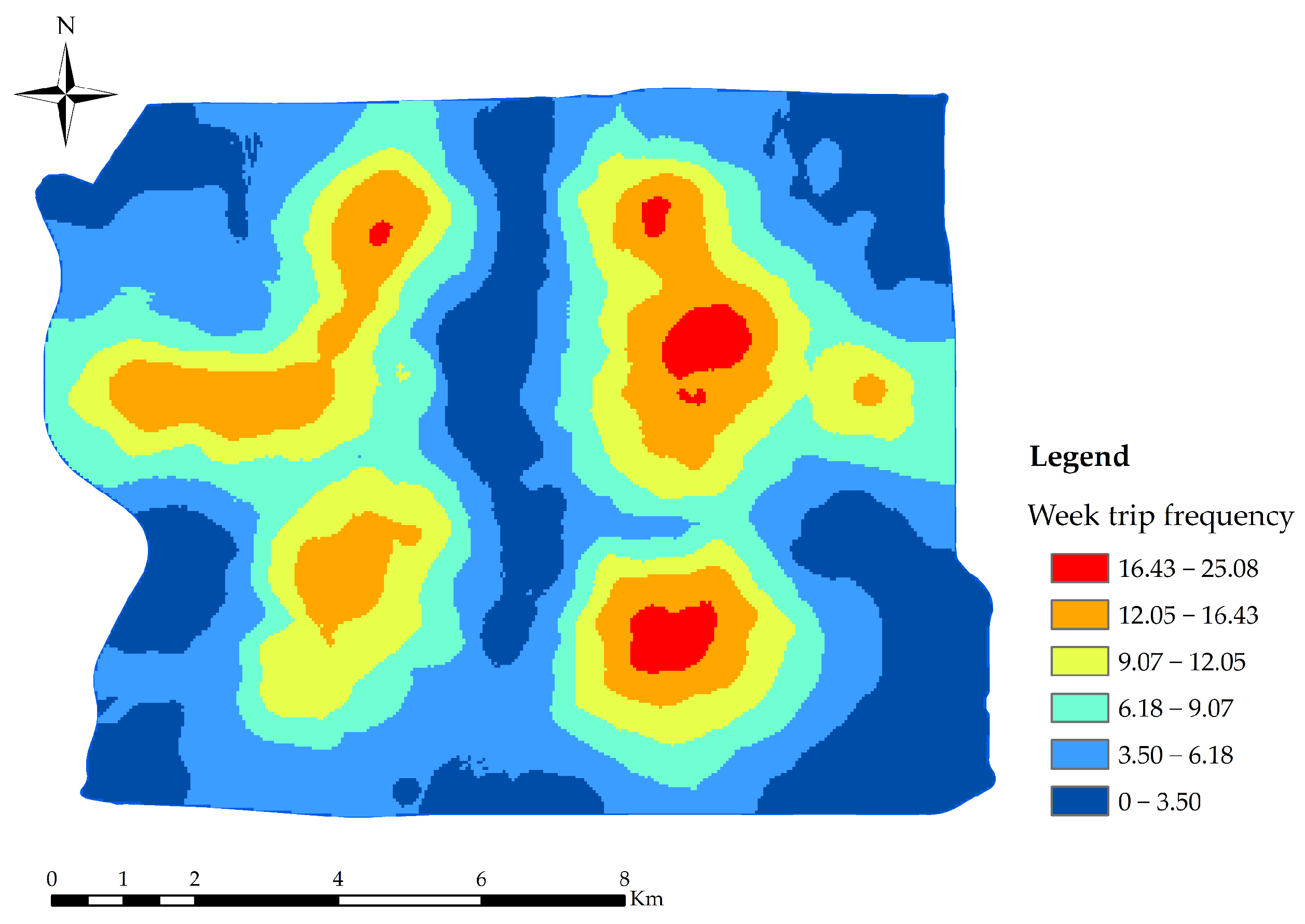
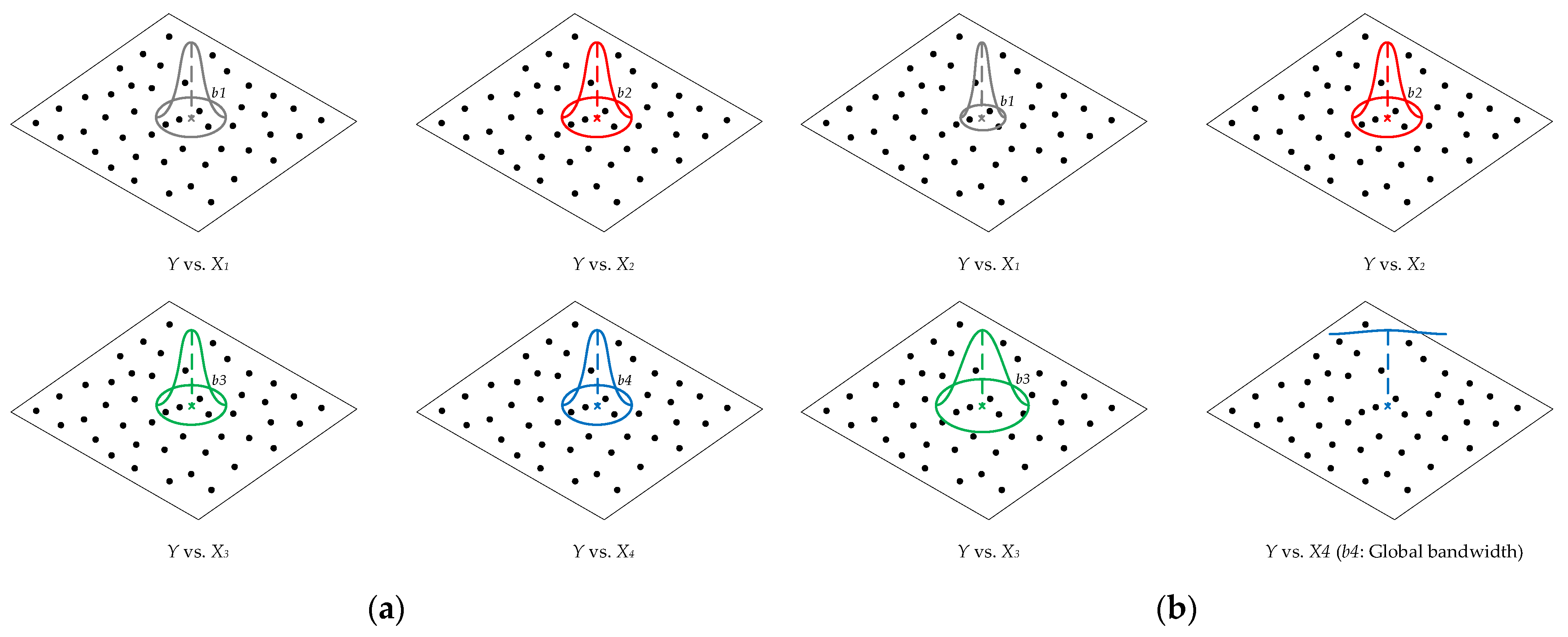
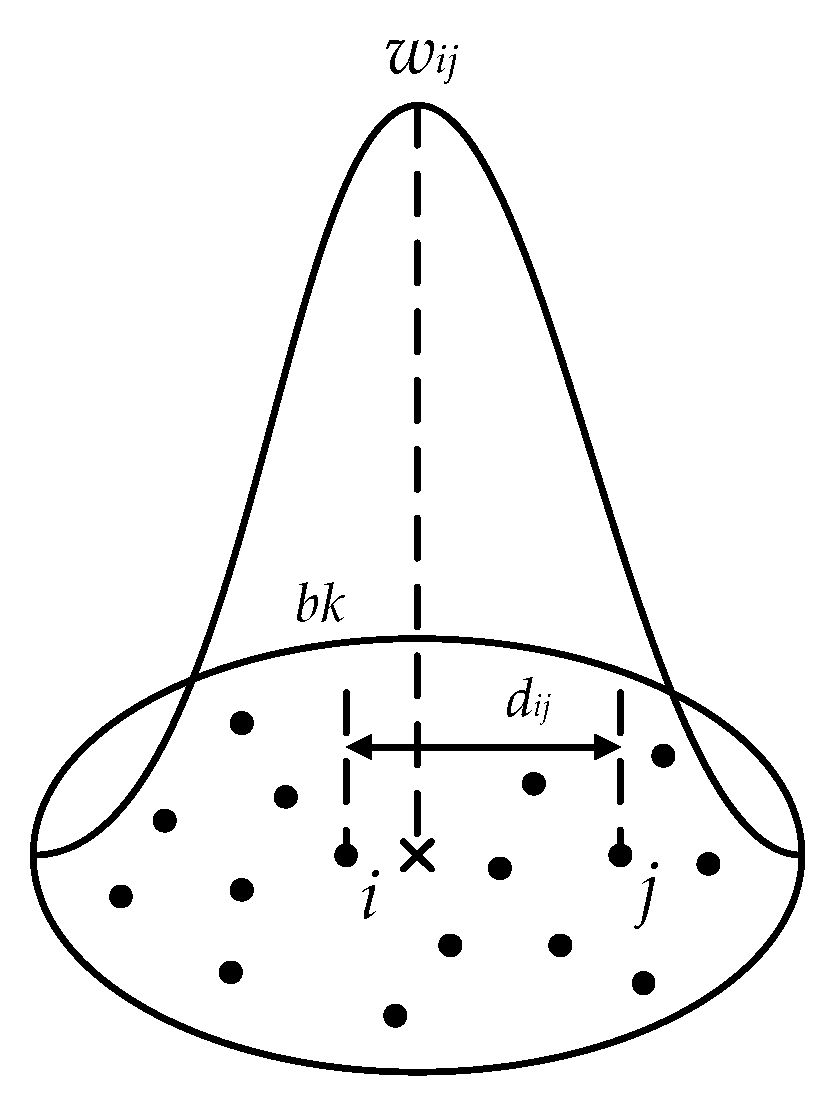
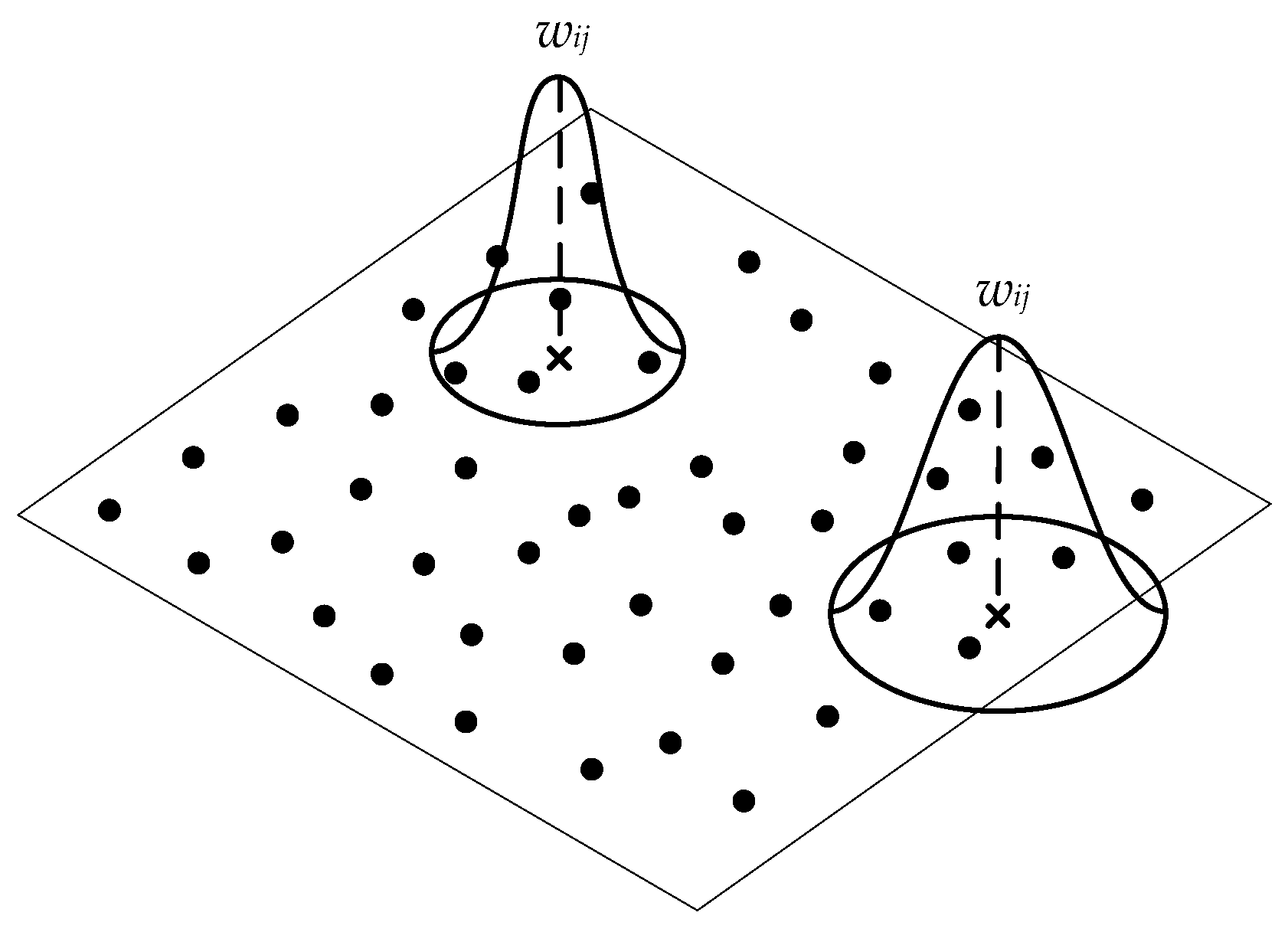
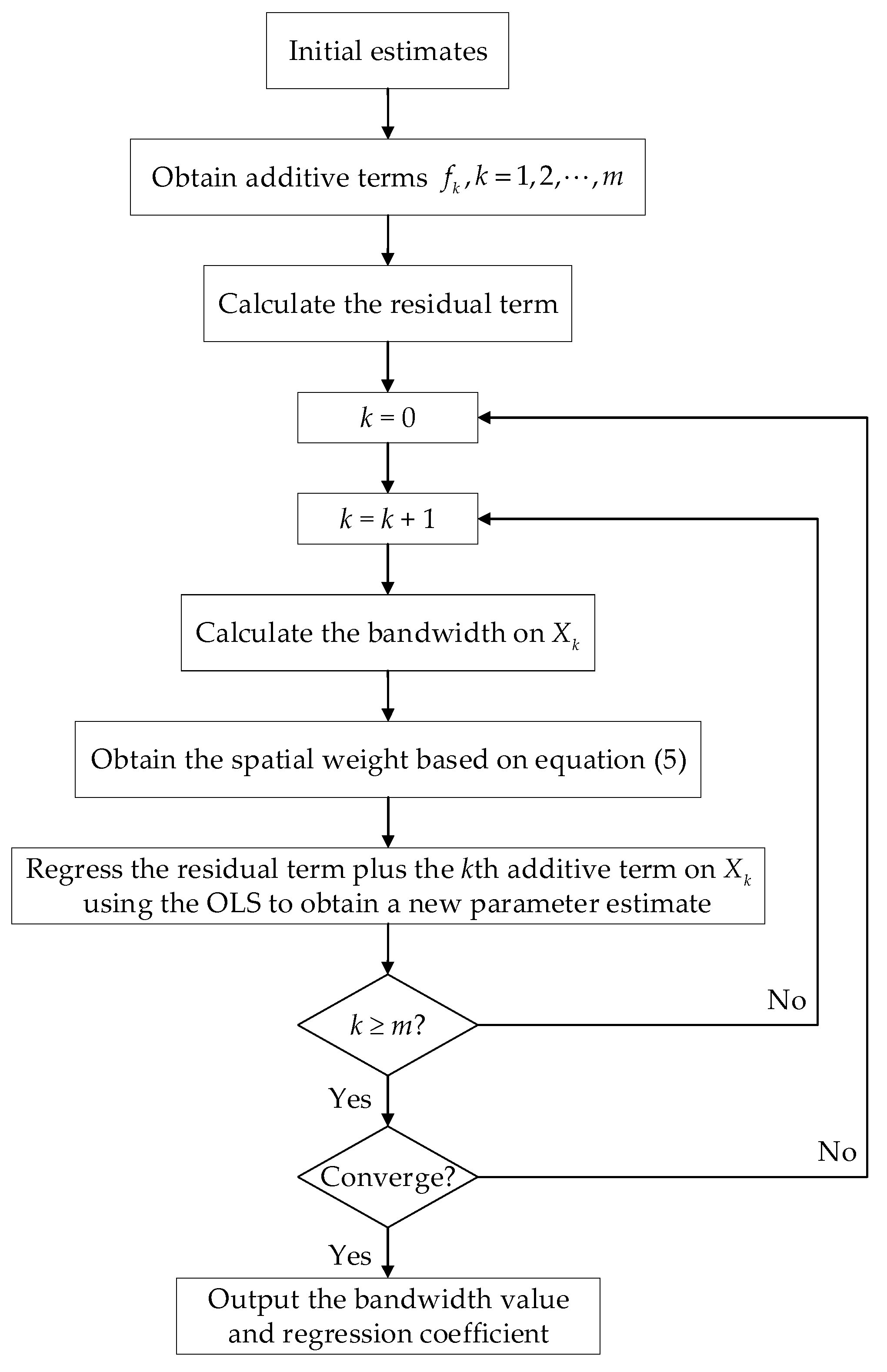

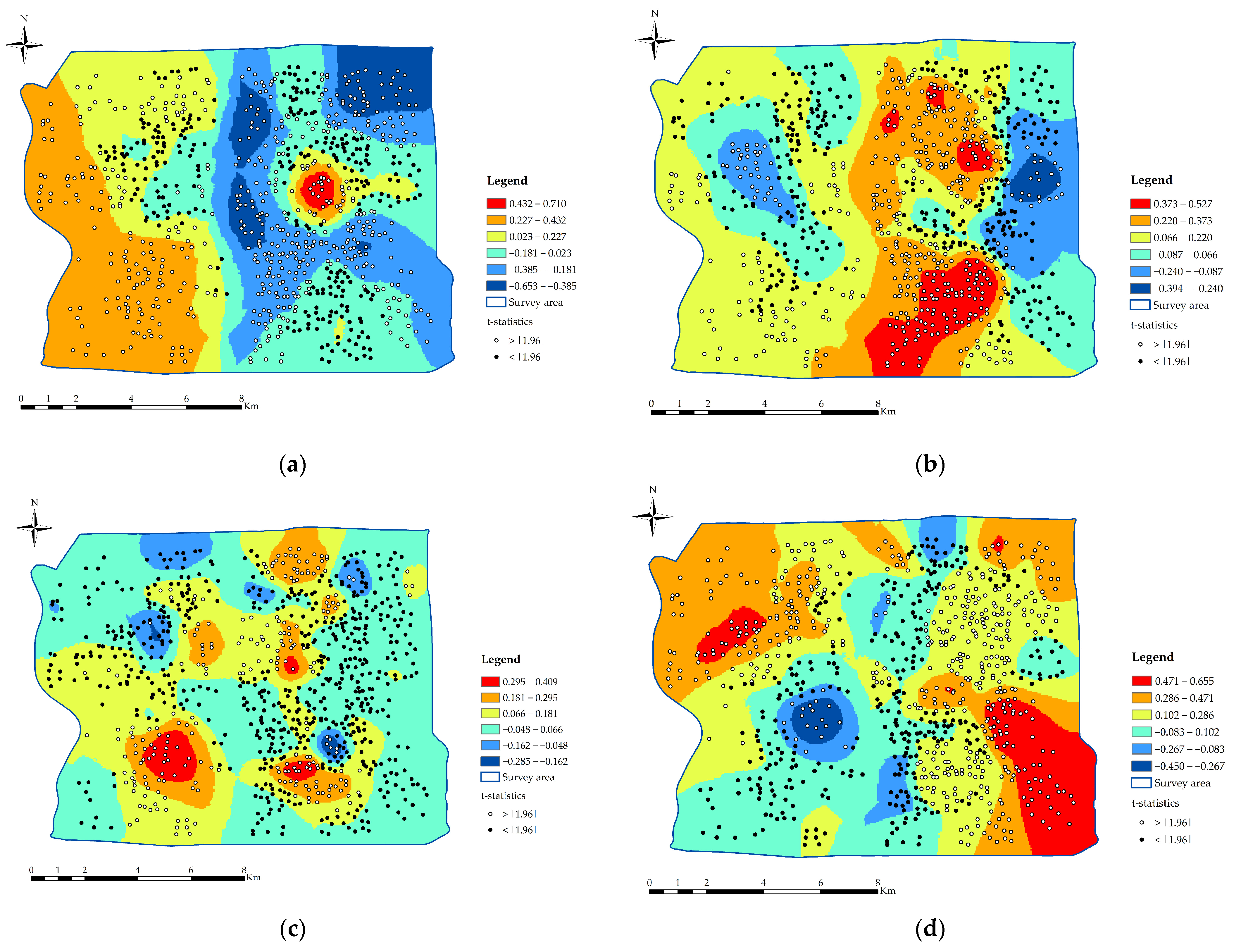
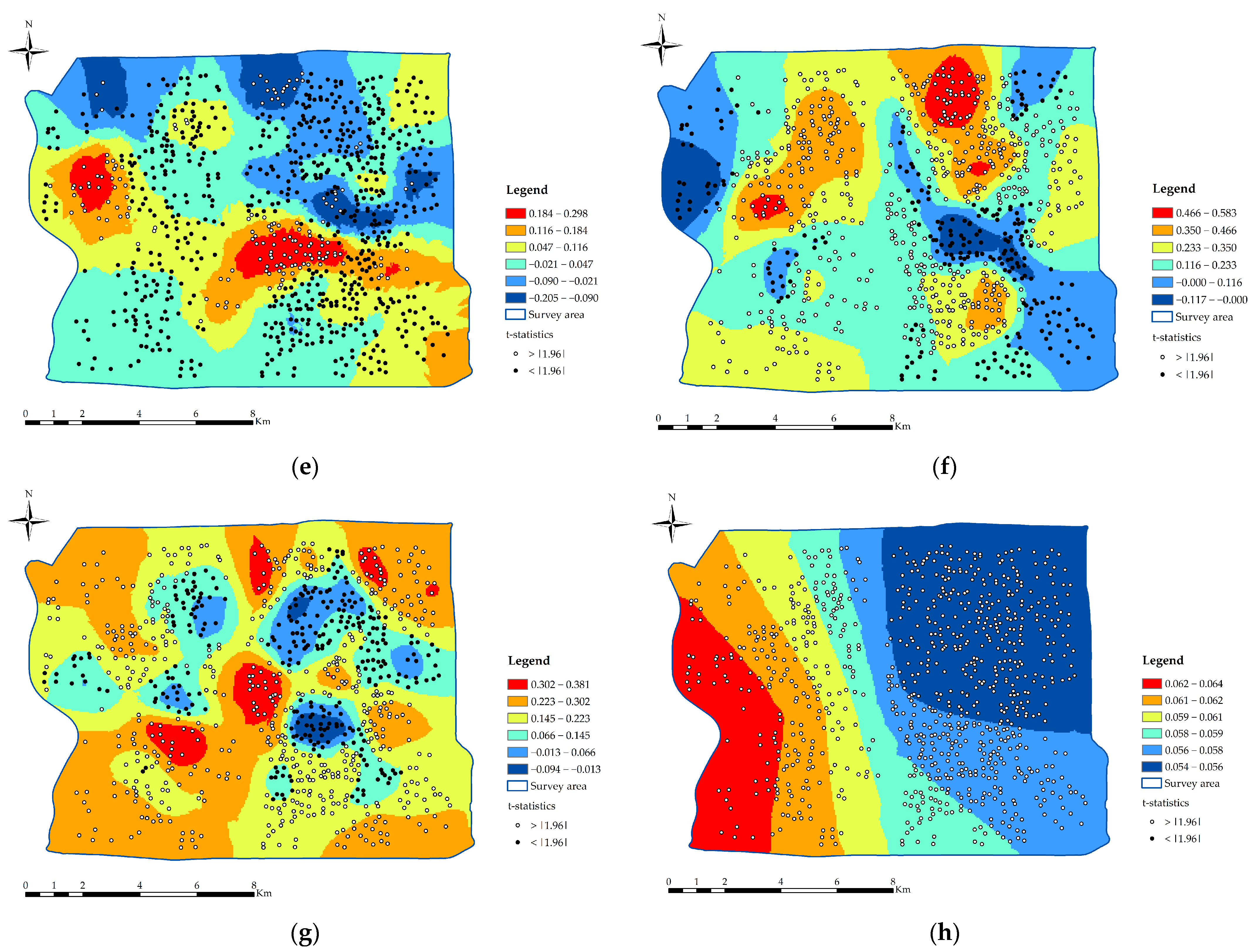
| Factor | Reference |
|---|---|
| Residential density | Ding et al., 2014 [19]; Böcker et al., 2016 [17]; Cerin et al., 2017 [3]; Ma et al., 2018 [20] |
| Land use mixture | Cerin et al., 2012 [15]; Feuillet et al., 2018 [5]; Cheng et al., 2022 [21] |
| Number of road intersections | Hanibuchi et al., 2011 [22]; Zhang et al., 2016 [13]; Xiao et al., 2020 [23] |
| Number of pedestrian crossings | Ewing and Cervero, 2010 [24]; Lee and Dean, 2018 [18] |
| Number of bus stops | Smith et al., 2010 [25]; Ding et al., 2018 [26]; Cheng et al., 2021 [6]; Yang et al., 2022 [27] |
| Number of retail establishments | Nagel et al., 2008 [28]; Zhang et al., 2014 [29]; Feng, 2016 [30]; Yang et al., 2022 [31] |
| Number of restaurants | Barnett et al., 2017 [2]; Hou, 2019 [32]; Li et al., 2022 [33] |
| Number of recreation facilities | Cheng et al., 2019 [34]; Cheng et al., 2020 [35] |
| Number of public service facilities | Engels and Liu, 2011 [36]; Yang et al., 2017 [37]; Hou et al., 2021 [38] |
| Category | Amount | Percentage (%) | |
|---|---|---|---|
| Registered residence | Rural | 452 | 52.38 |
| Urban | 411 | 47.62 | |
| Gender | Male | 447 | 51.80 |
| Female | 416 | 48.20 | |
| Occupation | Employed | 143 | 16.57 |
| Unemployed | 237 | 27.46 | |
| Retired | 483 | 55.97 | |
| Household income (RMB) | Less than 20,000 | 131 | 15.18 |
| 20,000–49,999 | 274 | 31.75 | |
| 50,000–79,999 | 316 | 36.62 | |
| 80,000–149,999 | 97 | 11.24 | |
| 150,000 or more | 45 | 5.21 | |
| Disability degree | None | 658 | 76.25 |
| Mild | 142 | 16.45 | |
| Moderate/Severe | 63 | 7.30 | |
| Explanatory Variable | Description | Mean | SD 1 |
|---|---|---|---|
| Residential density | Number of residential buildings per km2 in the radial buffer zone. | 11.13 | 3.20 |
| Land use mixture | Land use mixture measured by Equation (1). | 0.72 | 0.08 |
| Number of road intersections | Number of road intersections in the radial buffer zone. | 9.27 | 4.95 |
| Number of pedestrian crossings | Number of pedestrian crossings in the radial buffer zone. | 19.80 | 9.75 |
| Number of bus stops | Number of bus stops in the radial buffer zone. | 3.94 | 1.73 |
| Number of retail establishments | Number of stores, vegetable markets, and supermarkets in the radial buffer zone. | 8.54 | 4.69 |
| Number of restaurants | Number of dining rooms and food courts in the radial buffer zone. | 6.31 | 3.64 |
| Number of recreation facilities | Number of parks, spaces, and other entertainment equipment in the radial buffer zone. | 1.22 | 1.03 |
| Number of public-service facilities | Number of medical care, banks, and telecommunication in the radial buffer zone. | 4.32 | 2.48 |
| Explanatory Variable | First Collinearity Diagnosis | Final Collinearity Diagnosis | ||
|---|---|---|---|---|
| Tolerance | VIF | Tolerance | VIF | |
| Residential density | 0.425 | 2.352 | 0.431 | 2.323 |
| Land use mixture | 0.556 | 1.798 | 0.556 | 1.798 |
| Number of road intersections | 0.203 | 4.935 | — | — |
| Number of pedestrian crossings | 0.165 | 6.052 | 0.497 | 2.011 |
| Number of bus stops | 0.672 | 1.488 | 0.672 | 1.488 |
| Number of retail establishments | 0.272 | 3.681 | 0.272 | 3.678 |
| Number of restaurants | 0.307 | 3.261 | 0.308 | 3.243 |
| Number of recreation facilities | 0.368 | 2.717 | 0.368 | 2.717 |
| Number of public service facilities | 0.434 | 2.305 | 0.435 | 2.300 |
| Measurement standard | Tolerance > 0.2; VIF < 5 | |||
| Model Index | OLS | GWR | MGWR |
|---|---|---|---|
| 0.749 | 0.940 | 0.962 | |
| Adjusted | 0.746 | 0.919 | 0.949 |
| AICc | 1276.952 | 634.493 | 235.550 |
| Residual sum of squares | 216.747 | 51.743 | 32.930 |
| Explanatory Variable | Bandwidth | |
|---|---|---|
| GWR | MGWR | |
| Location 1 | 71 | 43 |
| Residential density | 71 | 46 |
| Land use mixture | 71 | 43 |
| Number of pedestrian crossings | 71 | 43 |
| Number of bus stops | 71 | 48 |
| Number of retail establishments | 71 | 43 |
| Number of restaurants | 71 | 43 |
| Number of recreation facilities | 71 | 862 |
| Number of public service facilities | 71 | 862 |
| Explanatory Variable | Mean | SD 1 | Minimum | Maximum |
|---|---|---|---|---|
| Location | −0.056 | 0.257 | −0.653 | 0.710 |
| Residential density | 0.142 | 0.186 | −0.394 | 0.527 |
| Land use mixture | 0.078 | 0.106 | −0.285 | 0.409 |
| Number of pedestrian crossings | 0.191 | 0.190 | −0.450 | 0.655 |
| Number of bus stops | 0.035 | 0.092 | −0.205 | 0.298 |
| Number of retail establishments | 0.235 | 0.146 | −0.117 | 0.583 |
| Number of restaurants | 0.172 | 0.091 | −0.094 | 0.381 |
| Number of recreation facilities | 0.057 | 0.003 | 0.054 | 0.064 |
| Number of public service facilities | 0.024 | 0.002 | 0.021 | 0.027 |
| 0.949 | ||||
Publisher’s Note: MDPI stays neutral with regard to jurisdictional claims in published maps and institutional affiliations. |
© 2022 by the authors. Licensee MDPI, Basel, Switzerland. This article is an open access article distributed under the terms and conditions of the Creative Commons Attribution (CC BY) license (https://creativecommons.org/licenses/by/4.0/).
Share and Cite
Jia, Q.; Zhang, T.; Cheng, L.; Cheng, G.; Jin, M. The Impact of the Neighborhood Built Environment on the Walking Activity of Older Adults: A Multi-Scale Spatial Heterogeneity Analysis. Sustainability 2022, 14, 13927. https://doi.org/10.3390/su142113927
Jia Q, Zhang T, Cheng L, Cheng G, Jin M. The Impact of the Neighborhood Built Environment on the Walking Activity of Older Adults: A Multi-Scale Spatial Heterogeneity Analysis. Sustainability. 2022; 14(21):13927. https://doi.org/10.3390/su142113927
Chicago/Turabian StyleJia, Qinglin, Tao Zhang, Long Cheng, Gang Cheng, and Minjie Jin. 2022. "The Impact of the Neighborhood Built Environment on the Walking Activity of Older Adults: A Multi-Scale Spatial Heterogeneity Analysis" Sustainability 14, no. 21: 13927. https://doi.org/10.3390/su142113927
APA StyleJia, Q., Zhang, T., Cheng, L., Cheng, G., & Jin, M. (2022). The Impact of the Neighborhood Built Environment on the Walking Activity of Older Adults: A Multi-Scale Spatial Heterogeneity Analysis. Sustainability, 14(21), 13927. https://doi.org/10.3390/su142113927






